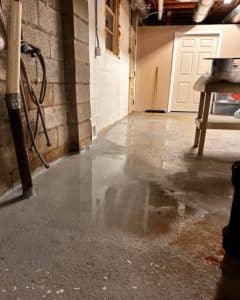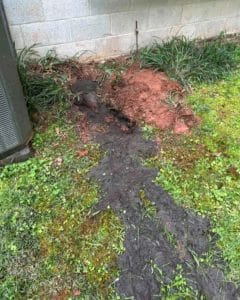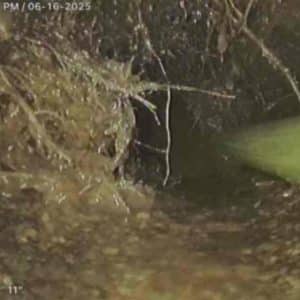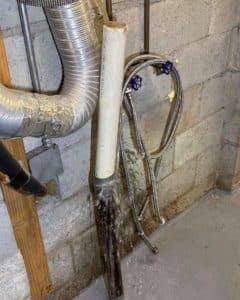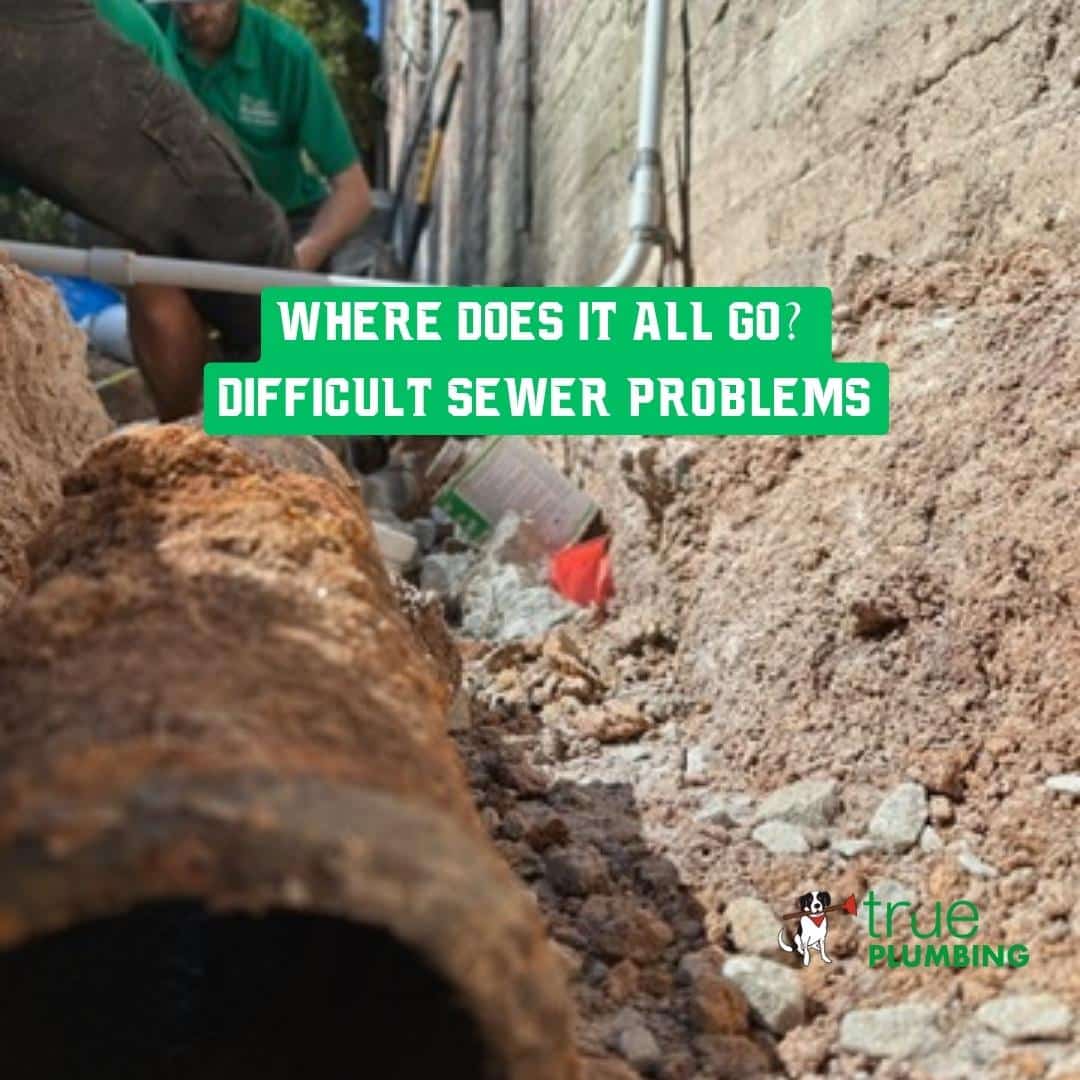
In June 2025 we received a call from a Brookhaven resident in a 1954 single family home experiencing an unknown leak in her basement. True Plumbing’s technician Kyle arrived on the scene for the emergency and found that her sewer was clogged, causing sewage water to leak into the unfinished basement. Luckily Kyle found a cleanout just beyond the rear exterior wall of the home where the sewer pipe exits the building. This cleanout, which is a pipe that lets us access the underground sewer, allowed him to run a rooter machine to break the clog and let the water flow down away from the home. Then Kyle was able to use his sewer camera to visually inspect the pipe and find its location and depth. The sewer went out the backyard of this home and into the neighbor’s backyard, where it travelled across the length of their yard. Unfortunately the 70 year old cast iron* and terra cotta** sewer line was completely filled with roots and averaged about 8 feet deep.
The mystery leak in the basement
The cleanout Kyle found… yuck!
Still from our sewer scope video showing root intrusion.
True Plumbing contacted the neighboring homeowner to ask for permission to excavate and replace the blocked sewer, but the neighbor did not want his property disturbed. Usually in this situation an easement would exist, allowing the homeowner in peril to excavate where needed in the neighbor’s yard. But in this rare instance the homeowner was facing a much more involved and expensive solution of rerouting the sewer entirely. Due to the slope of the land, she would have had to add a lift station to pump the wastewater out to a different location in the city’s sewer line much further away.
When a sewer line backs up, water will fill the pipe until it spills over the lowest opening. In this instance, the basement laundry drain was the lowest opening. Often times, it is a floor drain or a toilet.
Our resourceful customer contacted the City of Atlanta Watershed Department and obtained a map from a survey of the property in 1954 showing that an old manhole may exist in a back corner of her property. Sure enough, after several days, it was uncovered by the City of Atlanta. Over the years, trees and yard waste had buried this old manhole. The gracious City of Atlanta plumbers recommissioned the pipe and got it back into service. Then, our homeowner had the sewer routed to the manhole, paying about 20% of the amount a more complex rerouting would have cost.
Takeaway: It’s an internal joke here at True Plumbing that “the plumbing is the easy part”! Plumbing is tough work–especially drain and sewer jobs on hot summer days and freezing winter nights. But in our world of service plumbing we spend considerable time diagnosing issues and finding the best, most efficient solutions for our customers. Just like any other professional service, if we don’t critically think through the problem at hand and consider all of the options, we can end up making the wrong repair. In the case of this 1954 home’s sewer clog, what seemed like a standard sewer job turned into a strategic legal problem that involved several parties and the helpful response from the Atlanta Watershed team. We are very happy for our customer. Good things happen to those who are patient!
If you’re in the Atlanta area and looking for thoughtful solutions to your plumbing problems, call or text 770-PLUMBER. We’d love to be of service.
*Cast iron is a common pipe material still used today, mostly in commercial buildings. Made from pouring molten steel into a mold, it is heavy but very durable and flameproof. It has a varying life span depending on what chemicals flow through it. Over time it will become scaled inside and eventually leak. In almost every home that has cast iron drain piping, the first pipes to leak are on the kitchen drain system because of the acidic waste from our food.
*Terra cotta or clay was commonly used as a pipe material in Atlanta up until the 1970’s. It is made in shorter lengths where a male and female end can be joined together to form long runs for sewer and storm wastewater. However, over time terra cotta is likely to crack and roots tend to find their way into these pipes.

